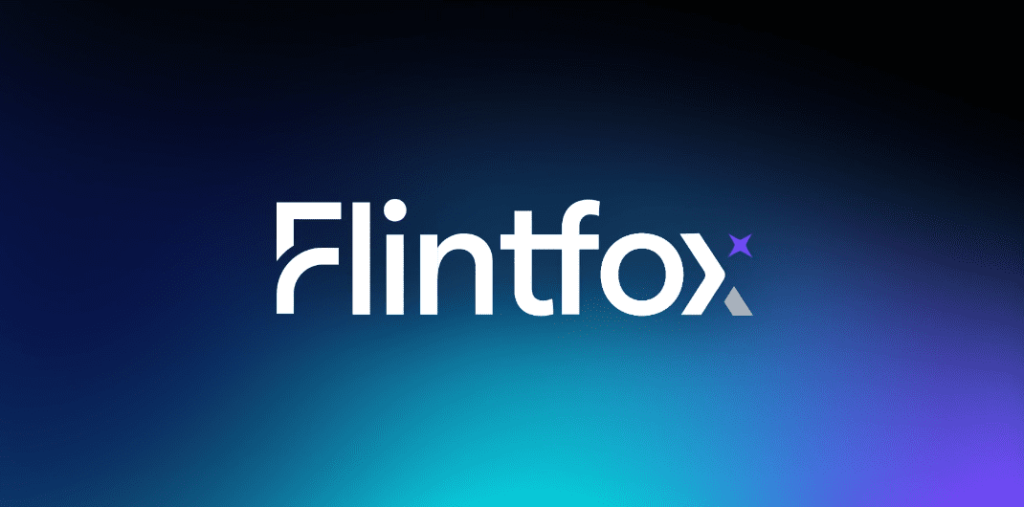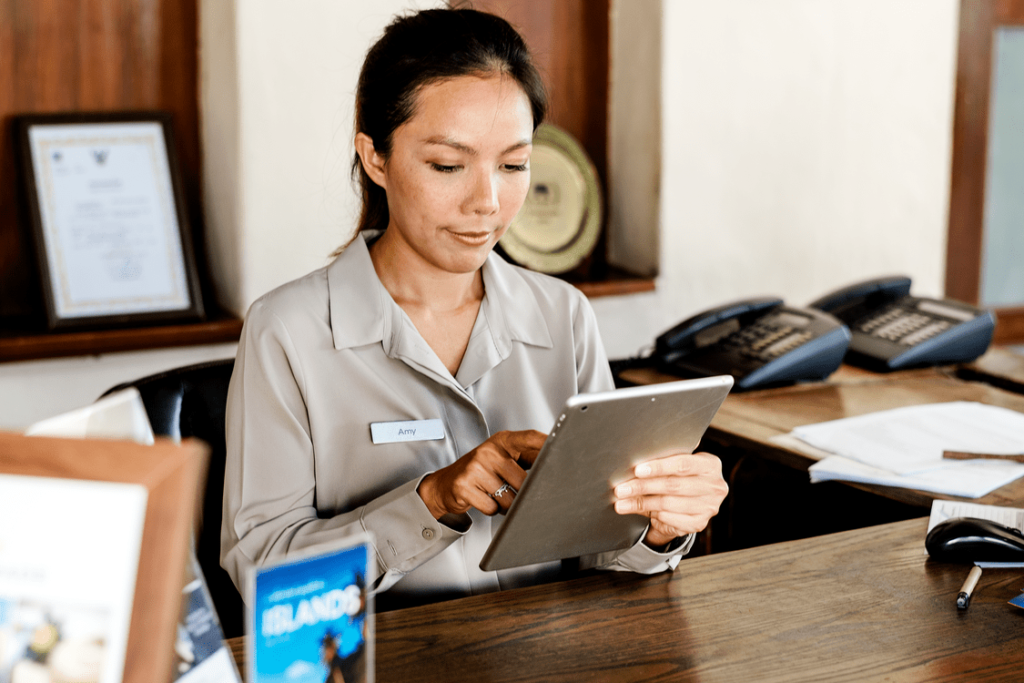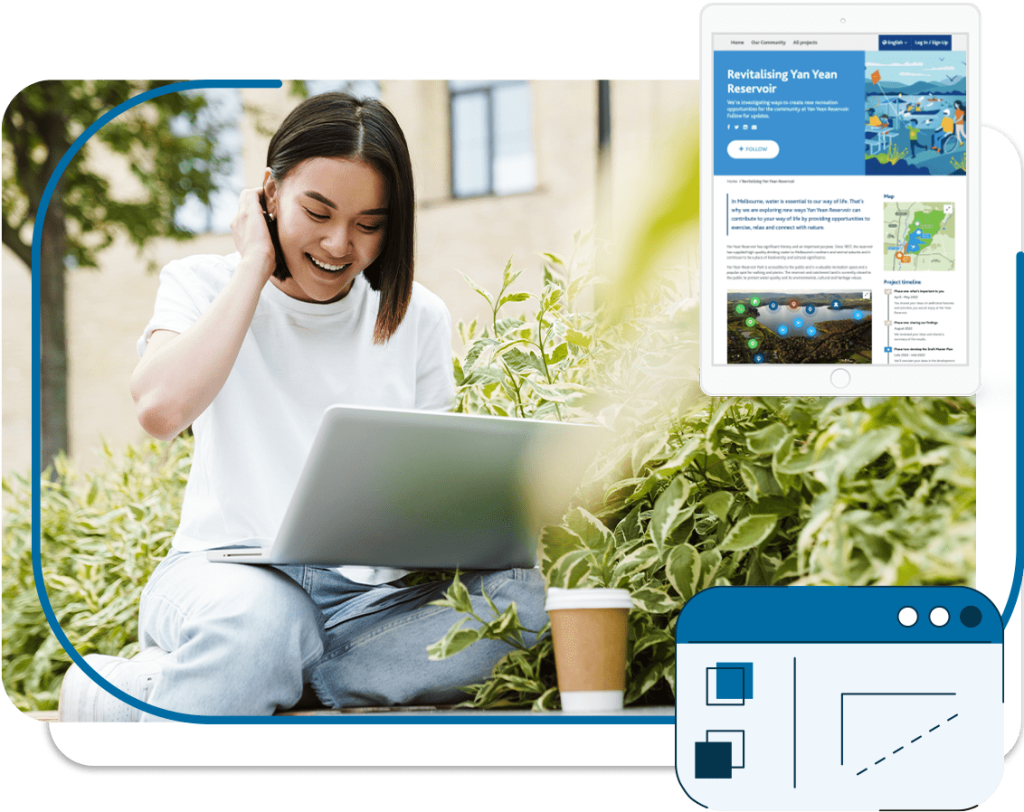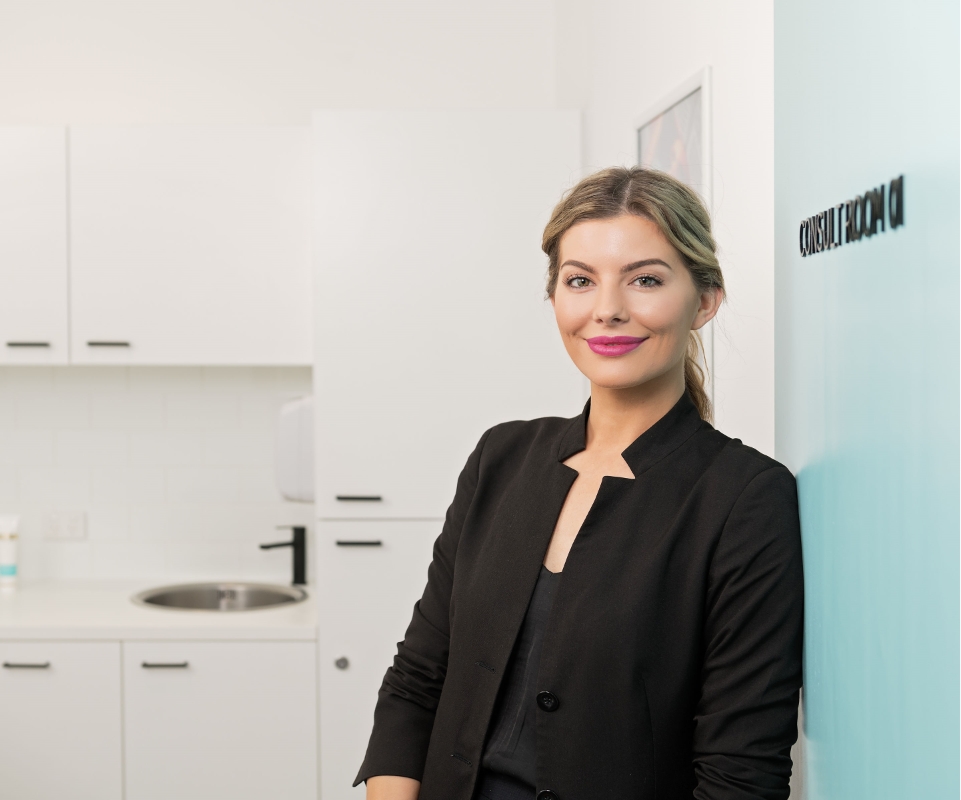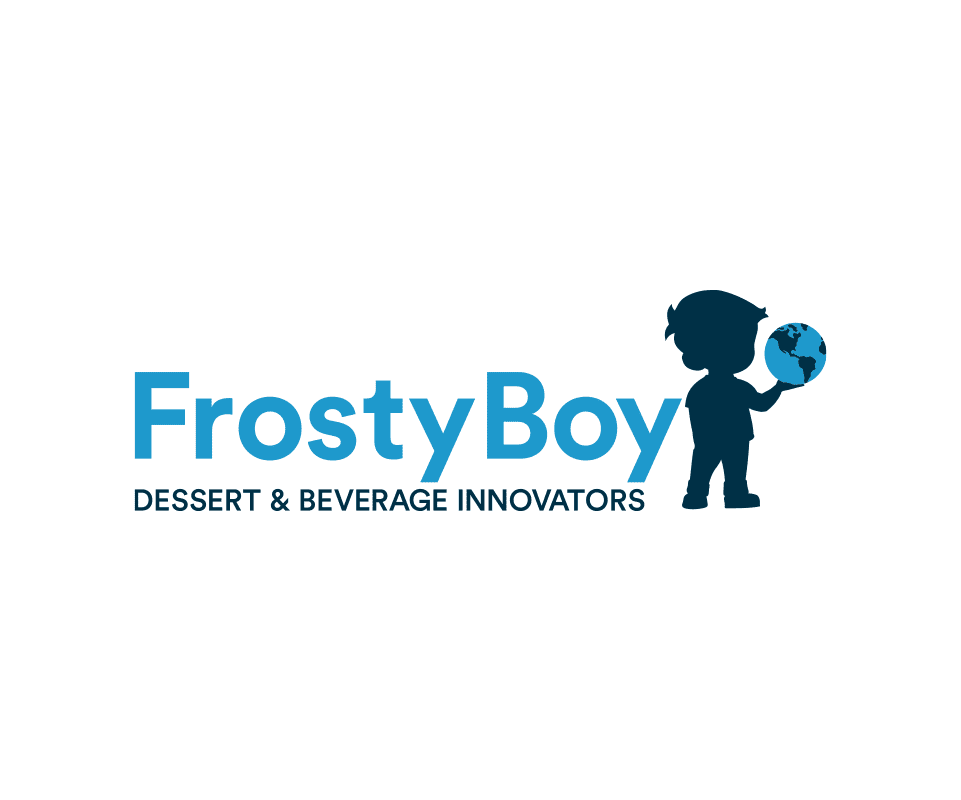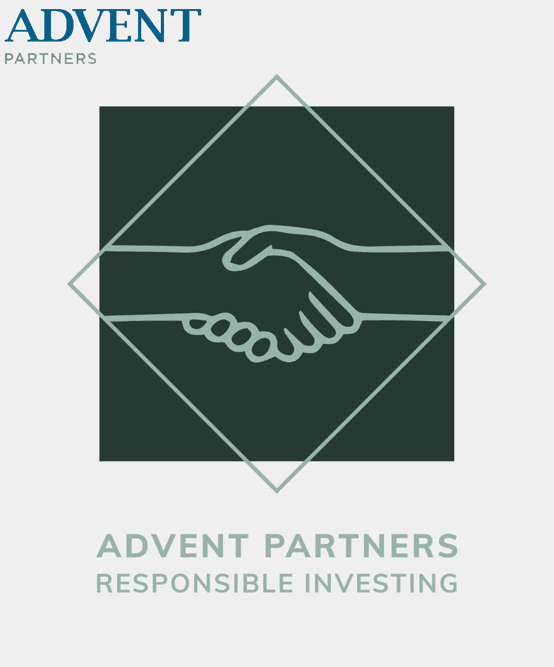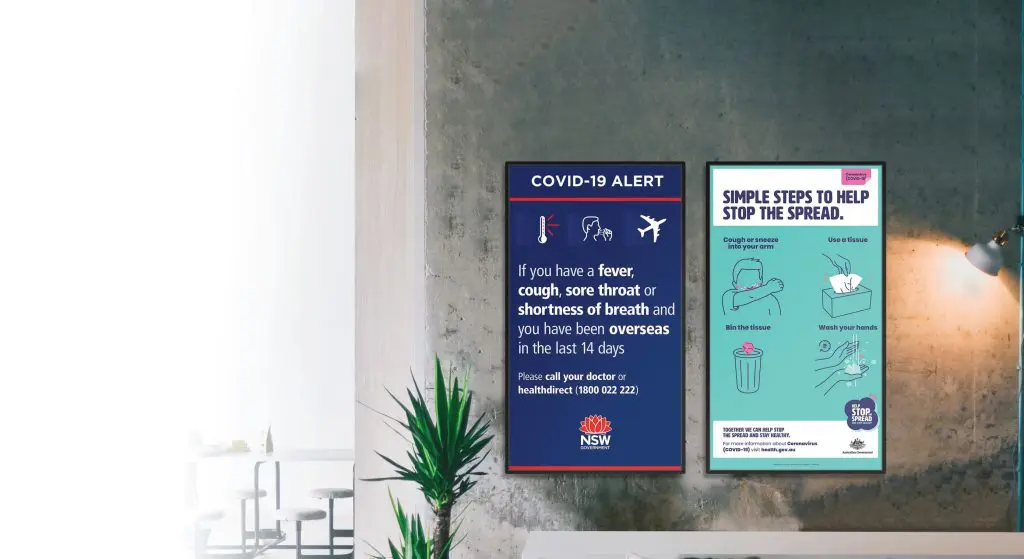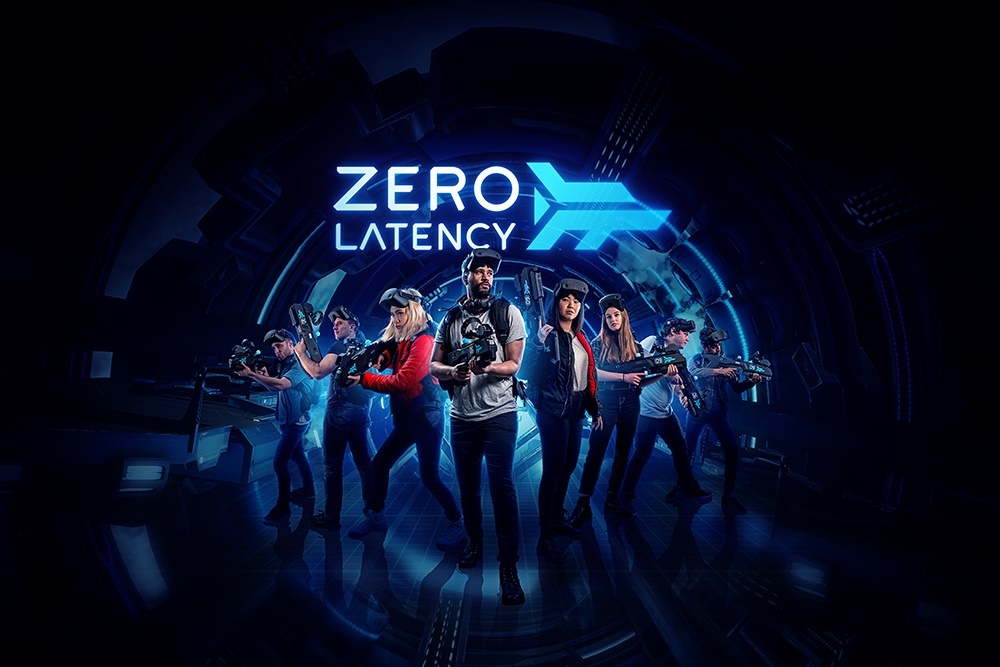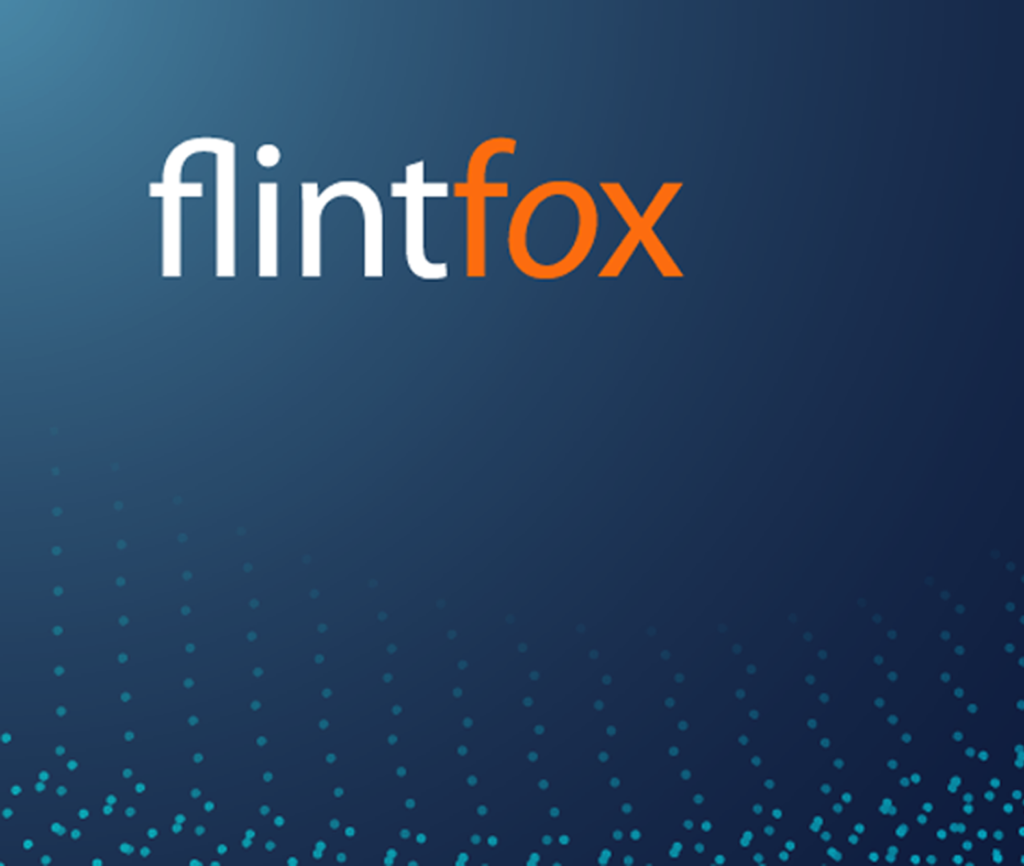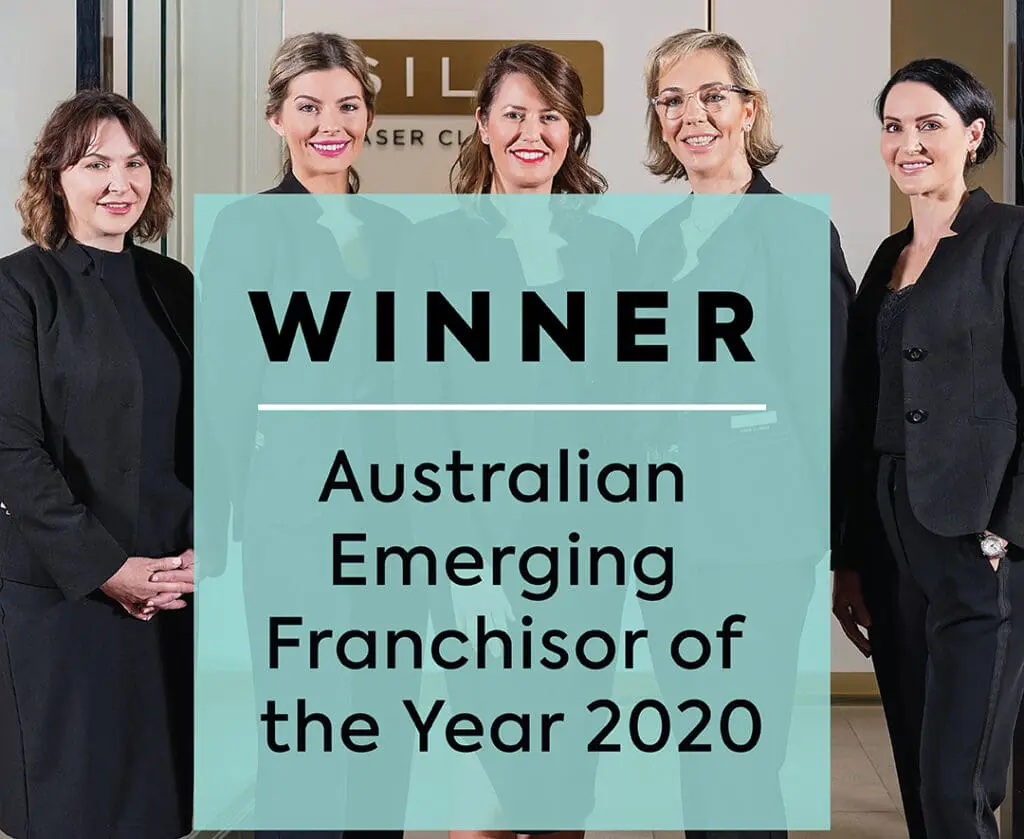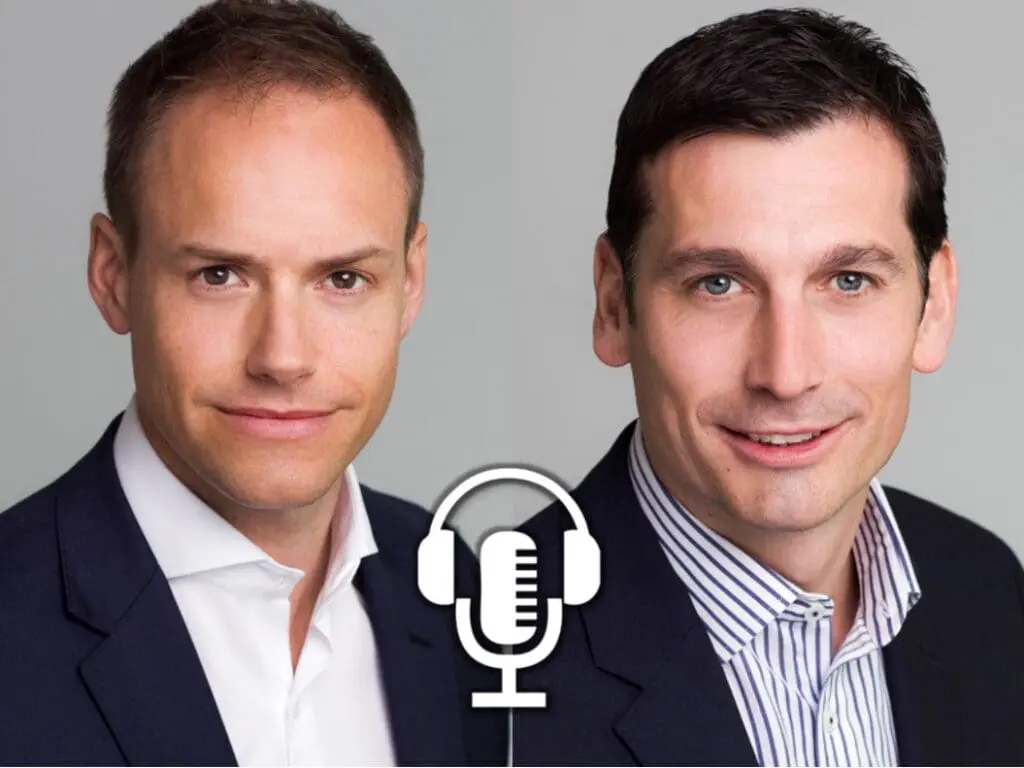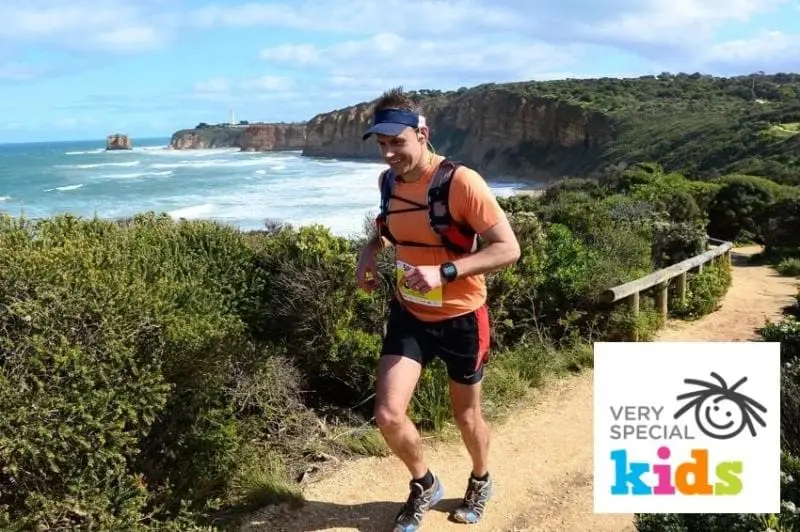Brad Lynch (Advent) & Martin Perelman (SILK CEO) joined David Chambers (AIC) and Stuart Dettman (Rothschild & Co) to discuss SILK’s journey from receiving growth capital via private equity to accelerate its network expansion plans, to listing on the ASX.
Please find Webinar here.
Guests: Brad Lynch of Advent Partners & Martin Perelman (SILK CEO)David Chambers:
Stuart, thanks so much for setting the scene for us and very thorough review of the current markets. And hi Brad. Hi Martin. Thanks for coming back to join us. We’ll kick off a bit of a panel discussion now. What I’d like to remind the audience is; we will have a Q&A at the end of the session. So if you’ve got any questions or think of any, whilst we’re having this discussion, please send them on the chat feature and we’ll get to them at the end of our panel discussion.But welcome Martin and Brad, I’d like to kick off. Martin, if you could just spend a minute, just to give us a bit of an overview of the SILK business from when it was established through to probably up to the point where Advent got involved in the business and we can chat to Brad after that a little bit about advance thoughts, but if you could kick us off there, just put a bit of background for the audience, Martin.
Martin Perelman:
Yeah, sure. Thank you, David. I’ll try and keep it to a minute, but I’ll try. I’ll see how quickly I go. Look, SILK Laser Clinics is a full rounded cosmetic clinic. Now we have 118 clinics located across Australia and New Zealand.
We started in South Australia as purely a Laser Hair Removal Clinic all the way back in 2009. And we were growing roughly at about a clinic a year. In late 2017, early 2018 we brought on Advent as our major sponsor in private equity, taking a majority share in our business. Advent brought the knowledge and skills to help formulate our board and put together a pretty strong business plan for us to grow from then 12 clinics to 60 was sort of the goal in a three-year period and also diversify our service offering.
We were starting to diversify, but we wanted to make a real pivot into being a predominant cosmetic injectables business with our other services and becoming a full-service cosmetic clinic.
Fast forward three years to December 2021, we listed at 56 clinics and cosmetic injectables had become number one turnover part of our business and we’d sort of morphed into a full-service cosmetic clinic. And then the IPO process allowed us to get access to further resources. And we did our first major acquisition, acquiring one of our competitors, Australian Skin Clinics.
And we’d also grown at 62 with the acquisition of 56 clinics in September this year. That brings us to 118, which is where we’re at. As of today, we have footprints in every major state in Australia and New Zealand and continuing to grow, to hit sort of our long, mid to long term goal of 150 plus clinics in this, Oceania region.
David Chambers:
That’s fantastic. Thanks Martin and congratulations as well for the great start certainly on the market. And as Stuart pointed out and long may continue, it sounds like a fantastic, great growth story. So I’ll just go over to Brad now just quickly. So I think you’ve probably covered some of it here, Martin, but I was going to ask Brad, what was, what attracted Advent to SILK to find it out in the first place and how did that all work out?
Brad Lynch:
Thanks David. In terms of the attraction to SILK, we’d had performed a lot of desktop research around this particular industry. It originated from a research project, which was called appearance medicine. Myself and the team had gone out and spoken to a lot of participants in the market.
And interestingly, when we came across SILK, there were a number of attributes that we really liked about the business. The first one was that, they had a willingness to partner. And indeed prior to our involvement, SILK took on some external equity with a family office based in Adelaide. So, they knew about the philosophy of partnering and how important that was.
When we looked at network of clinics as well, interestingly, they were quite strategic in where they were applied. They had a dominant position in South Australia, a dominant position in Tasmanian and the Northern Territory.
So they were playing in markets where others weren’t and creating these almost kind of regional leadership positions. So, we thought it’s actually quite an interesting platform. It was 12 clinics at the particular time to really build on that network and go either way across Australia. To partner with others via M&A on the Eastern side of Australia. Also organically push into Western Australia as well.
One of the other things about SILK is that they’d reached that point where they had built the capability and expertise for cosmetic injectable. So most of the businesses in this particular sector, the genesis had been laser hair removal. It was a high kind of cash generative offering. But to actually develop the infrastructure from a medical perspective, to be able to have the appropriate clinical oversight for cometic injectables. That required a significant investment in operating procedures, medical oversight, and SILK had the early stages of making those type of investments and had reached a point where cosmetic injectables were creating a larger part of the service mix.
So we thought we, with Martin in the team, there was a real opportunity to accelerate growth with the right partner and with the right backing and the right plan. I think the other aspect as well is Martin had a very clear vision for growth. When we met with him, he was able to articulate where he wanted to take SILK.
And that was a journey that we believe we could support and facilitate. And I suppose as they say that the rest is history from 12 clinics to 56, when we listed and now 118. It’s a very powerful story about what growth private equity can do for an emerging dynamic organization in a really interesting, sector as well, which was growing at, 15% per annum across various categories
David Chambers:
That’s fabulous Brad. And so it was 2017. Was that right? When you got involved.
Brad Lynch:
So it was January 2018 when we got involved and listed November/December 2020.
David Chambers:
Great. So obviously that growth have the initial growth happened with you involved in stewarding the business with Martin. But in terms of the exit paths that you were considering, with IPO versus other exits trade sales, etc, how did Advent go about that decision making in terms of the exit?.
Brad Lynch:
So there were a number of alternative credible exit paths for SILK at the time of IPO, which were actionable. I think for us it came down to assessment, collectively is on a risk adjusted basis what was the best outcome for all shareholders at SILK.
One of the attractions for the IPO exit was there was a partial liquidity event for all shareholders. There was ability to put primary capital on the balance sheet and essentially continue to execute the investment thesis that Martin and the team had set up to three years prior.
So, Advent knew the team, knew their ability to be able to execute and had confidence about the go forward position. And with a residual stake, as a listed company, we could participate in continued upside in the business moving forward.
So we were confident with SILK in particular as a very interesting and unique asset that we were taking to the public markets. There wasn’t a pure play operator in this nonsurgical aesthetics market and it’s an interesting segment straddling not only, consumer branded, but also healthcare as well.
I think Martin probably can attest to kind of the conversations that he had and the rest of the management team with institutional investors about this particular category. And being able to demonstrate some of the favourable attributes of treatment plans and the repeatable nature of that engagement with the customer.
And indeed, the predictability of kind of performance as well. So we were confident that over time, as we delivered against that investment thesis, there should be some reweighting of how the markets thought about SILK and as they gained understanding of the business model and SILK’s unique position in that.
David Chambers:
Thanks, Brad. You jumped to one of the questions, I’ll be asking Martin in a bit later on, but I just wanted to get Stuart some of his technical knowledge. So just for the audience, really typically, how long does it take for a business to prepare for an IPO? So I won’t ask specifically how Advent went around their business with SILK, but typically Stuart. How long would it take?
Stuart Dettman:
It really depends on how well prepared the company is internally. And one of the great things about companies having an investment from and growth capital from private equity is as well, what private equity can bring to that business is internationalization of the business ahead of heading into a market or a sale process.
So making sure that corporate the business is well established, from a corporate structure, from a legal perspective, all the agreements are signed up and are valid and making sure that processes are in place that are needed for an IPO.
And the governance arrangements that exist at board level, that obviously you replace the members of the board as you go into a listed environment, but the fundamentals are there in place. The accounting systems are all in place.
So with that in mind, private equity can typically move quite, backed companies can move quite quickly. And preparation times, generally, we would guide it to around three months can be shorter or longer, but a three month time period in preparation, then you move into formal marketing of the transaction.
And that in itself can take six weeks to eight weeks, depending on what process you follow. So overall you are looking at a time period somewhere between, say three, four months at the time to stand out to about six months in terms of preparation for an execution of an IPO.
David Chambers:
Great. Stuart, thanks for that. Does that sound about right Brad and Martin, that was kind of the timeframes you were working through around? Give or take.
Martin Perelman:
I give you a few weeks.
Brad Lynch:
Yeah, that’s right. Pretty consistent. I do recall a conversation I had with Martin, discussing the IPO path and considering alternatives. And it was, I recall it being around July have been a bit earlier rather. And Martin was thinking, all right, so we’d do it in 2021. And I said “No, this year.” That was an interesting conversation.
But to Stuart’s point, the business was well prepared. We had the institutional disciplines there that the plan was very clear.
And so for us to move to become a publicly listed company in many respects, it wasn’t very different to kind of the environment that the company was operating in, obviously public scrutiny now, but in terms of the disciplines in the business, they’d been established way back in January 2018.
David Chambers:
That was great. Thanks Brad. So what I was going to ask Brad, particularly was around the projections for the IPO sale. What were your thoughts on that when you were sort of marketing SILK at that time?
Brad Lynch:
It was a hot issue at the time, because particularly for the ASX, given the uncertainty around COVID and to Stuart’s point previously, around that time, there wasn’t many businesses that looking go public providing extensive kind of projections. So we were a bit unique in that regard.
So we lodged a prospectus at the back end of November. And we went out with a FY21 projection, which is essentially four months actual, and eight months forward looking. We engaged with the ASX early, as part of that, we actually wrote to them and said, “this is why we believe we’ve got a reasonable basis in being able to put a more long dated projection out they’re relative to some others that were listing at the time or had gone before us”.
And that came down to a couple of factors, one the business model of SILK, as I mentioned previously, that there’s a high amount of predictability with respect to clinic performance, just given the nature of the treatments that are provided to customers, either on packages, which are redeemed over a period of time, or alternatively, there’s treatment plans, which have an element of regularity about them.
The other aspect was that, the vast majority at that time of our clinics were in South Australia, Western Australia, and Queensland, which were less impacted by COVID. So I suppose the biggest threat to the projections was a shutdown, a lockdown and an inability to trade. We had a little bit of a curve ball, from the South Australian government on the 18th of November, where they brought in their circuit breaker kind of lockdown.
So all retail closed which was meant to be for seven days. I think it was the world’s shortest lockdown, because it ended up being three or four days in South Australia or something to that effect. But we were still confident that wouldn’t have a material impact on the projections, because what we found back in the March to May lockdown, the first lockdown is that, once we were able to open up our clinics, there was a significant bounce back in trade.
So you almost recovered and sometimes you exceeded kind of the lost days that you have in treatments. The SILK team did a great job of being able to a waiting list in terms of booking, being able to have those waiting lists and being able to really flex the labor, to be able to support extended trading periods.
So as a board, we felt confident not withstanding that we were in an uncertain environment that we had a reasonable basis to go out to the 30th of June 2021. And as history has shown we’ve exceeded those prospectus forecasting. Indeed, we did an upgrade in December. And then, exceeded even that revised projection as well. That was obviously a good news story in that regard.
David Chambers:
Great. Thanks Brad. Martin, over to you, we touched on this a little bit earlier, but did the IPO process reveal anything to you about how institutional investors thought about SILK and the business model and the industry?
Martin Perelman:
Look, I sort of echo some of Brad’s comments. We’re quite a unique offering in the market at the moment in what we do. So look, a lot of our, even now, in our first year is really operational understanding of how our business works education. If you think about our broad demographic 93% or something like that of our clientele, females, 18 to 55, most of our institutional investors are men in their forties, fifties, etc, majority.
So teaching them about what we do understanding about how we’ve pivoted to repeatable services with a…which is where injectables goes. Botox last four months then wears off, often you’re fighting aging. So it’s a never ending battle.
So for us, it’s been really a learning curve. I think from my perspective, I’ve had three investments in our business, one through family wealth, second through private equity and third through an IPO. The thing that I probably learnt the most is in all three situations, investors invest in the people and the story more than necessarily, and they’ll do their numbers and they’ll do their modeling and obviously do their due diligence, but they really want to understand the story and management’s ability to execute against that story.
And that’s been a really interesting learning curve for me is we have lots of new institutions wanting to learn and understand, it’s the same story, understanding about how we’re going to go about executing this and that.
So even now, we’re a year into, we’ve got a great book of institutions and talk to them on a probably monthly basis. But again, majority of that is around operational understanding and how you’re going to do this, and pivot that, and spend an hour or two of our CFO doing their modelling, but it’s still, again it’s all around the operational understanding and management’s ability to invest, which sort of goes back to sort of Brad’s comments earlier around, and so that’s been on a learning curve for myself in particular, is about backing management and backing the people to execute against that
David Chambers:
And in relation to your team, what were those kind of things you had to manage with them? You know, once you went from private to public.
Martin Perelman:
Yeah. It’s not been too bad. Look, I try and become that cushion between my management team and the board and institution. But look, I’ve been doing that since 2018. So I sort of am in that, that sort of meat and the sandwich, if that makes sense and ensuring, we have great disciplines, we have a board, we have good corporate governance.
There’s been a few extra doting i’s and crossing of Ts at board meetings. But apart from that, nothing from a day-to-day operational piece has changed. I suppose, my team is a little bit more aware of being in a public market. So sometimes they might be a little bit more fastidious on doing X, Y, Z, but really day to day, nothing really changes too much because we were already doing that.
And I think that’s one of the reasons why we could execute against an IPO in a period of time, that was fairly short for us. I’d say it was a short, sort of, window. You know, we’re a fairly light resource team.
And from a management perspective, we had myself, my COO and my CFO, basically out of the business for three months, that July through to December the August through to December period, presenting to institutions to take the entire senior bench out of the business and for the company to still be able to succeed, do an upgrade and hit those numbers is a testament to the way the team presented and did very well. And again, it’s pretty well the same. I’ll say mould, we’re just head down bum up and executing it. As long as we get our numbers, it all sort of works out the rest.
David Chambers:
Excellent. Thanks Martin. And with continuous disclosure, etc, did that generate a whole lot of extra work for your management team or?
Martin Perelman:
Yeah, look, continuous disclosure is an interesting one and one that is always on the front of our board meetings to understand, and again that’s still a learning curve for me to understand of that continuous disclosure. And when does that pivot point hit for that position?
Again, I think that really is covered from ensuring that our board is aware and our board makes that executive decision with myself and my CFO and my CEO. Again, I try and make sure that my middle management, my GM suite are just focusing on what they’re doing, but their communication is very strong through to us.
So that we can make those key decisions or their continuous disclosure. That was one of the reasons for, and for the upgrade of our results due to how well we were performing and ensuring that we had to present and upgraded results, because we knew this notwithstanding a COVID lockdown of any long period, which lock would happen late June. Not earlier that we could, we had to do that for example. That was one of those items
David Chambers:
Great. Thanks Martin. And Brad, I was just, whilst we were talking about the team at executive team at SILK, can you let me know about the considerations in relation to escrow agreements between Advent and the management?
Brad Lynch:
I think our escrow considerations are typical of any private equity backed business and founder led organization. So from the private equity side of things, it’s “we don’t want too much, held over, creating an overhang in the stock, in the aftermarket, but there’s at the same time we want you to have skin in the game.”
I think for the management team as well, it was communicating that there was a modest release for management. Communicating to those prospective institutional investors and we could attest to this, that Martin in particular, hadn’t taken any money off the table as part of the Advent transaction, and here was an opportunity to diversify his own personal balance sheet but still, create a significant alignment moving forward.
So we arrived at a situation which is publicly disclosed. Advent had a 50% of release day one, the remaining 50% was split prospectus forecast and then half year results FY 22, and management was 30% with the remaining kind of stake, 50% delivery of the prospectus forecast, again, equivalent to Advent and then delivery of the FY 22 numbers. That seemed like a healthy balance.
As I said, previously in terms of the considerations of the IPO for Advent, on a risk adjusted basis, we made that assessment that we were happy to continue to hold shares because we believed in the upside and a reweighting of the business. So that escrow profile kind of worked with what we felt was in the best interest of our investors and how they could participate, continue to participate in upside and the value creation kind of story.
We were very confident on some of the other organic opportunities able to execute, obviously the ‘ASC’, Australian Skin Clinics transaction. And there’s still a lot of room for growth with respect to the industry as well. So that all played into consideration of escrow and how that all worked.
David Chambers:
Great. Thanks Brad, just remind the audience if they want to send some questions through we’ll, I’ve got one more question and then we’ll go through to the audience Q&A. So just a reminder to send those through in the chat or the Q&A. But to Martin. So you’ve probably touched on this a little bit, but it’s just a final wrap up on how’s your day changed now that you are the CEO of a public company compared to private company?
Martin Perelman:
It’s changing quite a bit and probably changing as we are continuing to grow as our business. I’m a very operational CEO. So I really get in there with management and as a small business CEO, and as we’re growing to sort of a medium to large, my sort of day to day role is changing to being a lot more investor facing.
So, we’re constantly having new institutions, wanting to understand people, wanting to come to talk, and obviously talking to our existing shareholders and institutions as well. So, a good portion of my week now is covered, probably one or two presentations a day, in regards to talking to institutions and investors about the company.
And obviously going on potential road shows on rapid insights, Wilson for example, as one of them, Morgan Stanley did on the other day as well.
So my role is definitely changing and with that, it was expected and I’m enjoying it for what it is. It’s a very, very different role to what I’m used to, but that’s all part of my learning journey.
One thing I’ve realized as your company grows and going from small business to medium, to potentially large, it’s about having great people around you and making sure you have faith and trust in those people to execute against the strategy. And my role is more, sort of, setting that strategy and making sure my management team are on part of that journey to give them belief, to execute against the story that I’m presenting to the institutions that are investing in us and our shareholders.
David Chambers:
Great. Thanks Martin. Okay, well I’ll wrap up the panel there. We do have a few questions coming through from the audience, which I’ll jump to, but thanks gentlemen for… Stuart for the presentation at the start and for your contributions in that panel chat. So thank you very much. So question for Stuart has come through, what does investor sentiment towards PE sponsored IPOs look like today as compared to a few years ago?
Stuart Dettman:
PE sentiment is really it’s driven by its ultimately a company by company. So the investors will approach each investment looking at what is the business in which I’m investing. So they don’t take a view, which says, “Oh, it’s PE-backed or not PE-backed. I take a different position. It’s very much driven by ‘what is the company that’s being presented to me’?
And SILK Laser is a great example here that it’s a business they’d not seen before. There wasn’t an opportunity to invest in the market. It had great growth opportunities in front of it had a strong management team that had successfully built the business over time.
And so they looked at that business as a standalone business, what does it look like? And then follow on from that was the comment that Brad talked about beforehand is, “Okay, well, what does the office structure now look like?”
What is Advent selling out of, or what is PE selling out of, what are management doing? And then are we comfortable with that sort of structure that creates appropriate alignment for the business going forward while ensuring that there’s adequate liquidity in the story.
So I think, when we look across the board, sentiment towards PE backed IPOs is good because they’re looking at the business itself. And I think, you’ve seen that in terms of the businesses that have come to market PE backed businesses this year on last year. There’s some been some very good businesses that have come to market. There’s a couple that are in front of investors right now as well.
David Chambers:
Great, thanks Stuart. We’ve got a couple of sorts of technical kind of questions of as well. One of them is what role do the brokers play in an IPO? Is that for you Stuart? I think.
Stuart Dettman:
Yeah. I can start. And then maybe Brad or Martin might want to chip in from some of their recent experience, but essentially the primary role of the brokers is to facilitate the engagement of the company, with the institutional investors. And then actually secure investors for that company at a pricing, at a price point that the company is willing to transact at.
So they will help prepare the company alongside other advisors, prepare the company for IPO, and then start the process with the institutional investors. And we can’t forget retail as well. That’s an important element of any allocation or any sort of shareholder register is it a balance between institutions and retail?
Ultimately, it’s the institutions that really drive the price setting mechanism. So they tend to get a bit of focus, particularly at the back end of a transaction when it’s coming to, “How do we actually now bring together all the feedback that we’ve got from the marketing that we’ve been doing to retail and institutional investors?”
How do we bring that together to then put a pricing in front or a range in front of institutions that the company would be accepting to transact at and that institutions are prepared to be within that range.
And then ultimately the brokers create a book build or an option style process where institution and retail bid for the shares that are available. And based on that demand, that’s achieved, they’ll then make a price recommendation to the company and an allocation recommendation.
So overall it’s about taking that a company that is private and putting it into new shareholders, being both institutions and retail through their networks and relationships.
David Chambers:
Brad or Martin you want to add anything to Stuart’s response?
Brad Lynch:
The only thing I would add is that, in terms of selecting a broker to support this particular journey, what was important to Martin and Advent was that from a marketing narrative, being able to understand the business model, having some conviction around where a price would land.
Making sure that the mix of institutional investors supported the long-term aspirations of the business are we looking for investors that wanted to come on the journey as well, which was important.
I think the other aspect is just, aftermarket support as well. And being able to provide, continued education opportunities for the market to cover the stock and also be thinking, post IPO as well.
And I know that Martin’s found that’s been quite useful with that relationship, which shouldn’t necessarily, cease immediately post IPO. And for the ASX transaction, there was a placement which was done, which was great to have the support of the existing, brokers part of the IPO process.
Or so we see this as not transactional in a relationship. It’s something that should be ongoing. So might pause there, just get your perspective on that piece in particular Martin.
Martin Perelman:
Yeah. Definitely look at pretty all exactly right. I mean, we had a robust process for selecting our stockbrokers and we had a couple that we ended up going with and the longer term relationship with them continues, I probably still speak to them on a very, very regular basis as we’re continuing our next growth story. Obviously, they were very key in our acquisition with Australian skin claims with another placement.
And obviously the quality of our institutions, which to point was critical for our success and institutions wanting to buy into our longer-term story. Yeah, I think the one thing is with the stockbrokers, we obviously selected, we very well with stockbrokers that would have a longer term relationship with us, not just at IPO, but moving into to a longer period of our continued growth story. So it’s been really key for myself as a newly listed CEO and my journey as well for the companies.
David Chambers:
Great. Thanks Martin. And look, we’ve got about three minutes left. I’ve got one question here, which might take us to the end, but if anyone’s got a burning question to send along, please you might be able to squeeze it in at the very end. But it’s a question for Brad. Is the overhang issue that you mentioned something that you think all PE firms have now accepted as part of the equation for taking in an investing company to IPO? Cause a few years ago, the need to retain a stake post listing was not necessarily the normal practice.
Brad Lynch:
Okay. It feels like an overhang or an element of retained stake. It’s important to provide, comfort to institutional investors that you believe in the growth story moving forward. As I mentioned, that was easy for us with respect to SILK, because it was one of the considerations in terms of that continued participation in the upside. Look, we are seeing that as a feature of kind of requests from, institutional investors.
There was a large stake that was obviously retained as well. I’m sure it’s a bit of horses for courses, but that’s my sense that alignment’s really important for institutional investors that you’re going to be there, obviously post-delivery of at least the first annual results of the business, but Stuart, I’d be interested in your perspectives on that.
Stuart Dettman:
Yeah. I Agree completely. If you look back in the two thousands and the listings that happened there, PE would exit completely. And it was institutions saying, I don’t want an overhang. I just want PE out because they’re not long-term holders in the story in the company, since the IPO markets reopened in globally, it’s always been that private equity would retain a holding US and UK.
They would always retain a holding in IPOs. When the market reopened in 2013 and since that time, so we’re now talking seven, eight years. It’s been virtually, every deal has seen private equity, retainer holding.
And that has been really very well received by investors.
And the sort of, I think, Brad, your comment around what you did in SILK Laser Clinics is exactly similar to what we see across the market more broadly, which is around half PE can sell up to sort of half their position and management around up to say, 30% of their shareholding creates appropriate liquidity in a good alignment.
And importantly, what we have seen is in future sell downs that have been done post listing private equity, they have been really well managed. So we’ve seen them executed cleanly. We’ve seen them executed at quite tight discounts.
Sure, the market’s aware that an escrow is coming off and there may be a sell down coming, but it has actually been quite a smooth transition for private equity selling and into an IPO, retaining a holding, and then if they want to selling down over time. So it’ll be a feature that will continue moving forward because I think it’s working well in capital markets right now.
David Chambers:
Perfect. Thanks Stuart. Thanks Brad. For responding to that one. Look we are right at 11 o’clock now. So I’ll wrap up proceedings there, but thank you Stuart, Brad and Martin for your time this morning, very enjoyable session.
I hope the audience took a lot out of that and got a lot of new knowledge to take away and think about in their roles moving forward. But thanks so much everybody for joining today and particularly to our presenters and we will be sending a survey as I mentioned.
So if you could respond to that, that would be fantastic, but please enjoy the rest of your day and see you later. Thanks, bye-bye.
Brad Lynch:
Thanks David.
Stuart Dettman:
Thanks David.
This transcript has been edited for clarity and brevity.


